Blending a pickup truck, sport utility and crossover into a single vehicle, Hyundai has unveiled the Santa Cruz Sport Adventure Vehicle. Hyundai says its new vehicle is “segment shattering.”
“The 2022 Santa Cruz breaks new ground within the SUV, Truck and Crossover segments by offering a true Sport Adventure Vehicle unlike anything else in the U.S. market,” Hyundai contends.
“Santa Cruz boasts bold yet sophisticated design, powerful and efficient powertrain options, a flexible open bed for gear, cutting-edge connectivity and a highly maneuverable all-wheel drive platform that is equally at home in urban and adventure-focused environments.”
Production at Hyundai facilities in Montgomery, Alabama, begins in June, the company said, adding that 1,200 new assembly-plant jobs will be created as a result.

“Santa Cruz, with its bold styling, breaks open all new segment territory, both for Hyundai and the industry as a whole,” Jose Munoz, Hyundai Motor North American president and chief executive, is quoted in the announcement.
“Open-bed flexibility coupled with closed-cabin security meets the changing everyday needs of its adventure-oriented buyers, while powerful and efficient engines and superb maneuverability ensure it is a pleasure to drive in urban or off-road environments. Our customers will wonder just how they managed before owning one.”
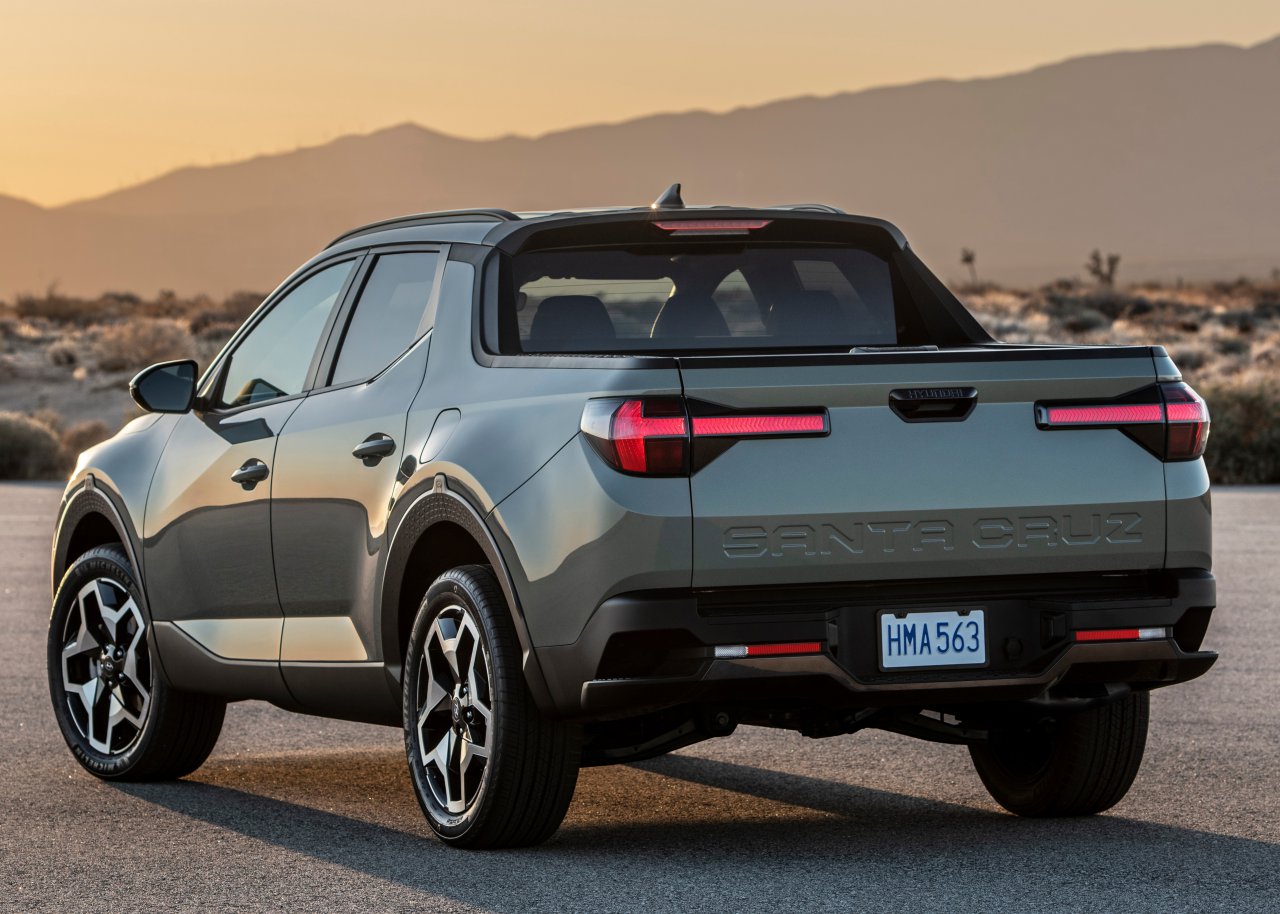
Hyundai said its market research determined there are potential customers living in urban communities whose lifestyles include the need to escape to weekend adventures.
“Many of these customers carry various gear and equipment that is better suited to an open bed rather than a typical SUV body style,” the automaker said. “These buyers want versatile transportation that is equally flexible for urban, adventure, occupational or even home improvement gear.
“Santa Cruz features a secure, open bed area which includes a lockable tonneau cover, hidden bed storage and versatile bed extension accessories. At the same time, these customers still value the secure utility of a compact SUV, with its comfort, passenger space, fuel efficiency and parking ease. Santa Cruz, with its unique, bold design, created an entirely new segment that meets these specific buyer needs like no vehicle before it.
“Everything about Santa Cruz reflects a duality of purpose.”
The SAV is powered by either a normally aspired 2.5-liter 4-cylinder engine rated around 190 horsepower and 180 pound-feet of torque, or a turbocharged powerplant rated at around 275 horsepower and 310 pound-feet of torque with an 8-speed, paddle-shifted dual-clutch automatic.
The engines feed what Hyundai terms its HTrac all-wheel drive system.
Hyundai said Santa Cruz is shorter in length, wheelbase, height and bed length than mid-size trucks such as the Toyota Tacoma, Honda Ridgeline or Nissan Frontier.
For more details, visit the Santa Cruz website.



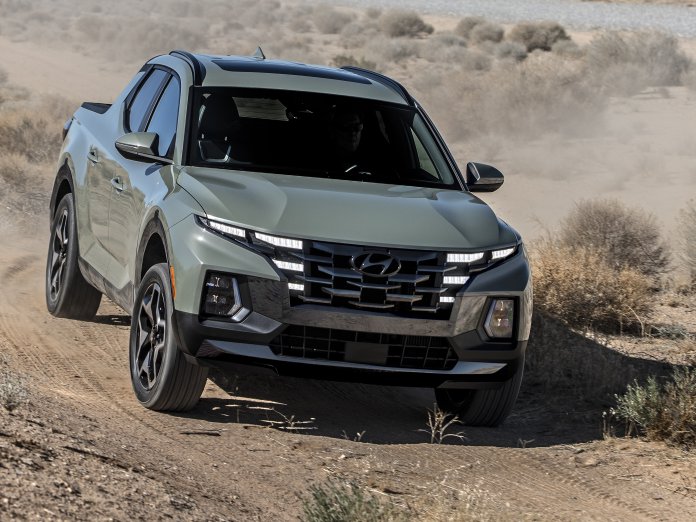
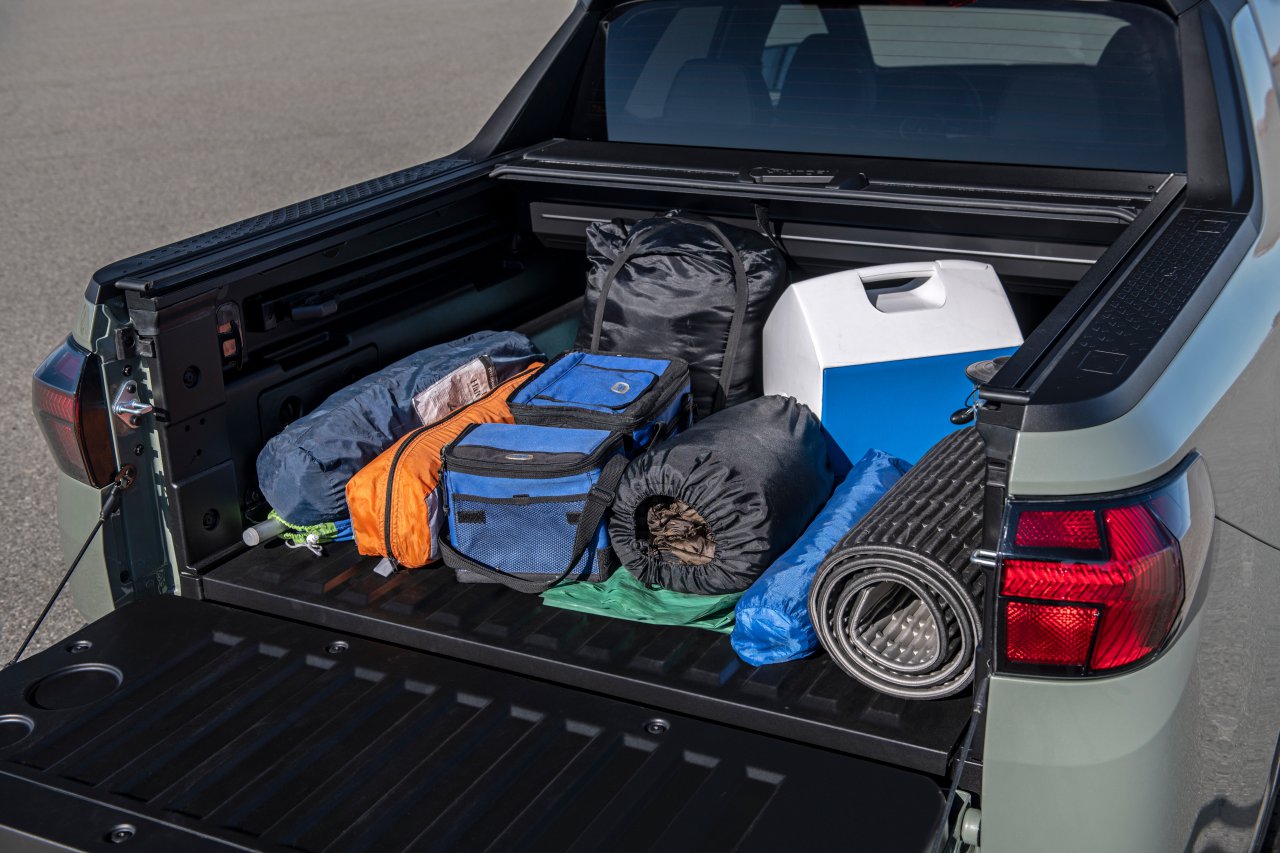
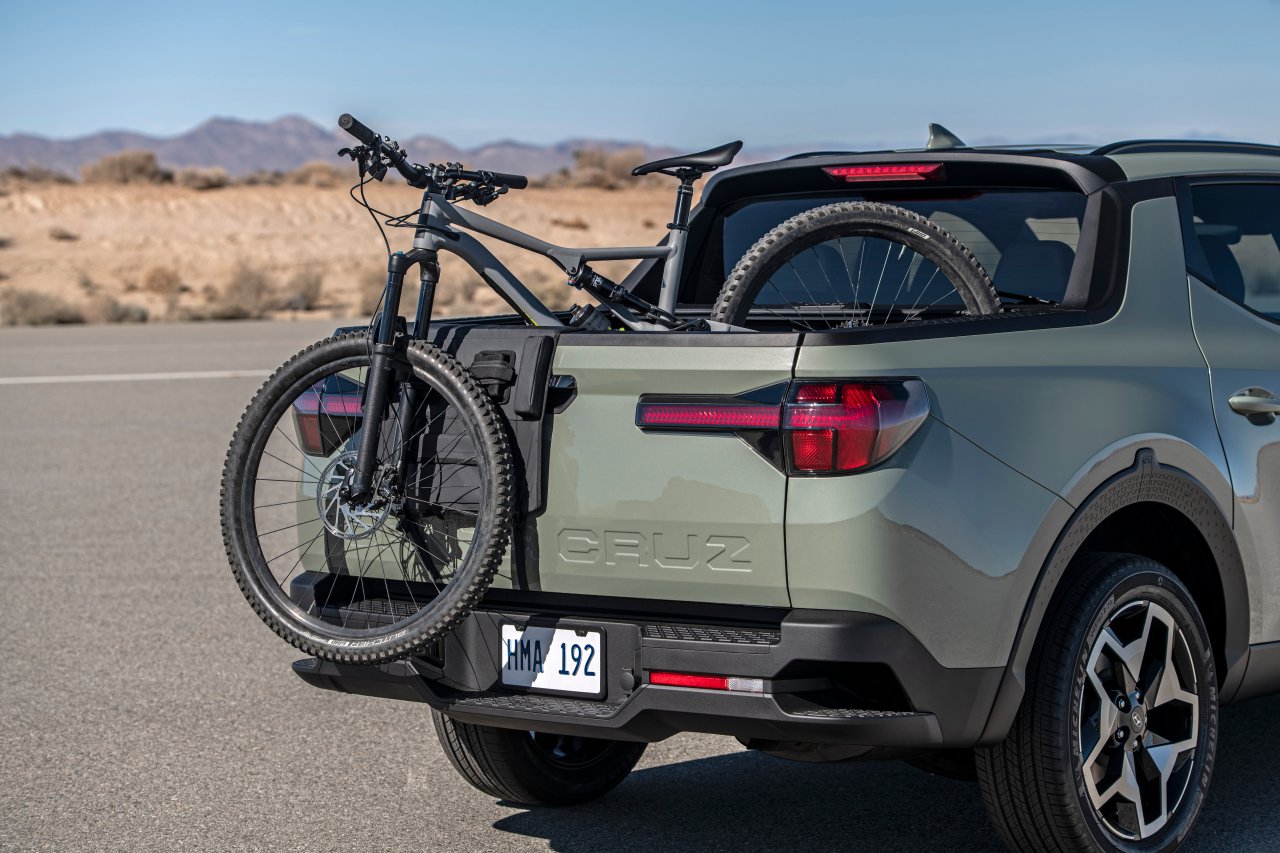
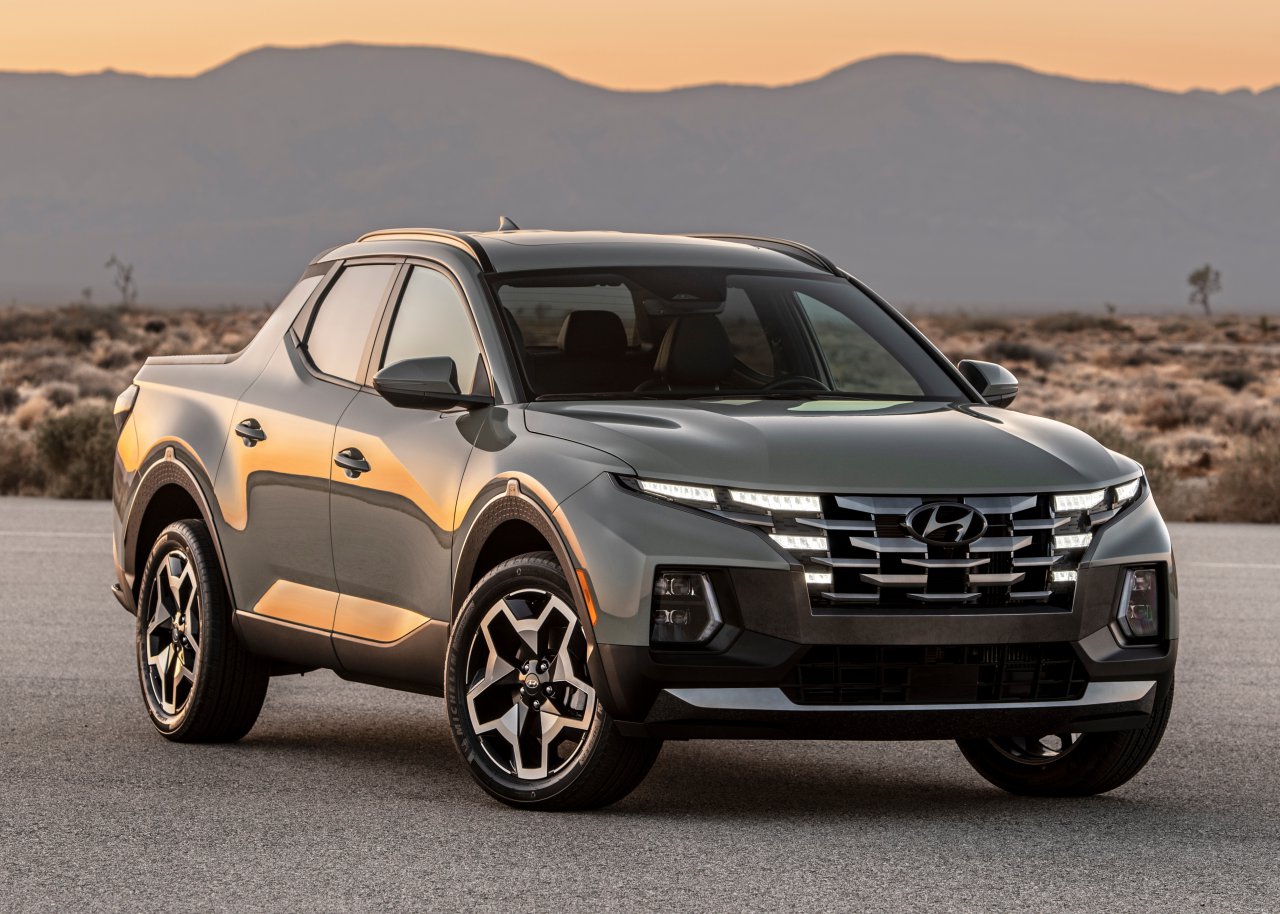
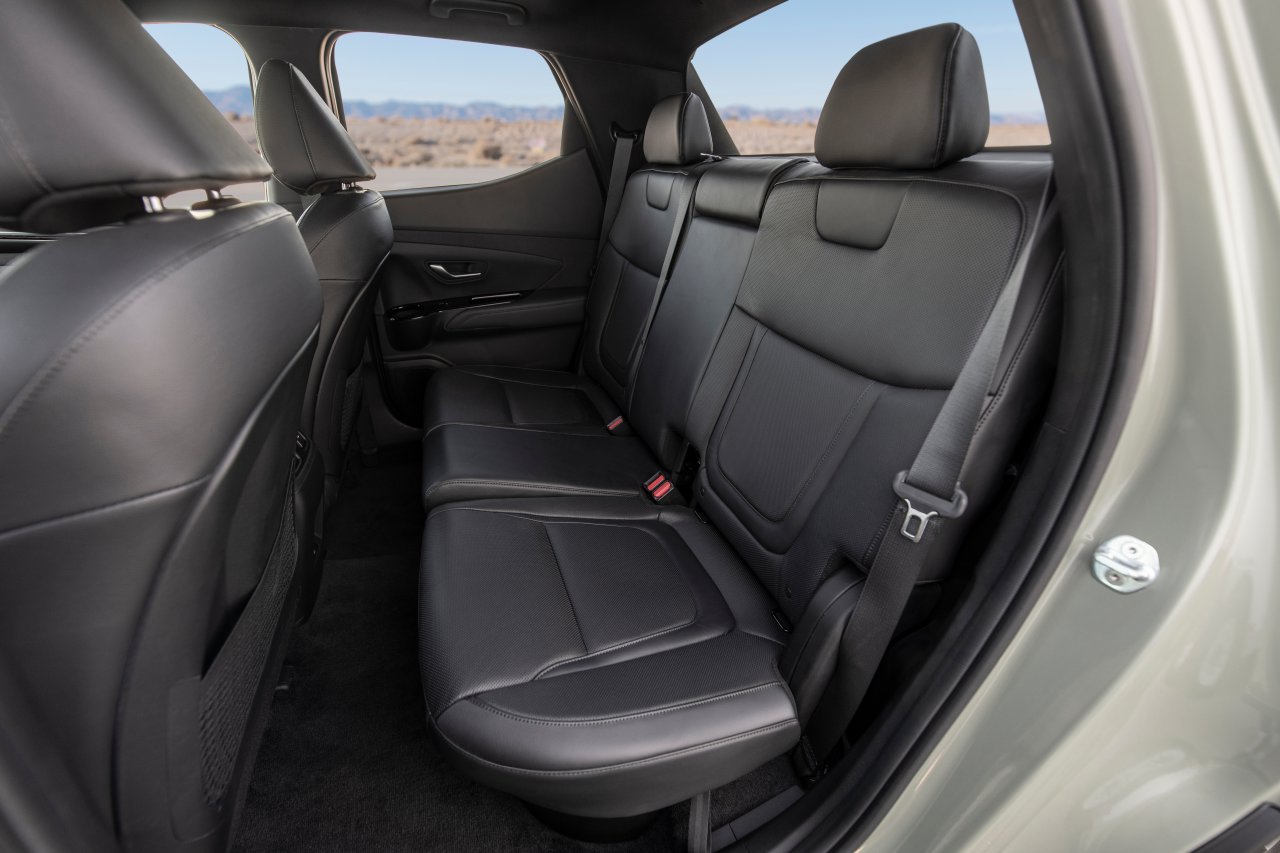


This layout is basically the same as the Subaru Baja, a bit larger, but the same general idea.
Will this persuade Subaru to resurrect the Baja?
Resurrect the Baja? I would hope not. If anything, the poor sales of the Baja should have been taken by Hyundai as a warning to abort the Santa Cruz before it started.
I laugh every time I read “segment shattering”! That’s what Subaru effectively said about the Baja. The Baja was introduced in 2003 as a multi-purpose vehicle with room for four passengers and a cargo bed for occasional sport and/or utility use. Their tagline was “World’s First Multiple Choice Vehicle”.
Check out the early press rollout video for the Baja (https://youtu.be/55yEAfInTb4). Its chock full of “first time ever” enthusiasm, and it’s eerily similar to the Santa Cruz rollout video (https://youtu.be/aAJAhU6389E) with its “first ever” claims, and how it describes its intended niche market target demographic (effectively “people who want to do stuff”). Except that the folks in the Baja video at least sound authentic, like they truly believed in their project. Whereas the people in the Santa Cruz video seem to be working hard to just get through it a straight face. It’s truly painful to watch Hyundai NA president José Muñoz try to pitch it. You just know he’s thinking “I just want to get this over with before somebody calls BS on us!”
For a vehicle like this to succeed, it needs to be able to carry four people, AND all their gear, AT THE SAME TIME! For the Baja it was an either/or choice, which contributed to its demise. The Santa Cruz can carry four people, but its diminutive bed can carry only ONE bicycle (and only if it’s loaded diagonally in the bed). Seriously?! How lame is that?
Beware Hyundai, the Santa Cruz’ days are already numbered. You should have studied history better.
You say that “for a vehicle like this to survive it needs to be able to carry 4 people and all their gear at the same time.” At that point you’re into a full size vehicle like the Chevrolet Avalanche. Or one might just as well buy an F-150 Supercrew. I think you’re missing the whole point of these smaller utility vehicles is their smaller size. Many people simply don’t want a large truck, nor do they have space for a large truck. As half ton trucks continue to get bigger and bigger, driving and parking them in urban areas becomes a major chore. And as fuel prices start to climb past the $3/gallon mark again in some areas many buyers don’t want to pay to feed a large truck if they don’t have to. I’m one of those buyers. I recently traded my F-150 for a used Taurus after realizing that I didn’t need the big truck and was tired of paying to feed it and tired of paying extra money in registration fees every year to the state for a vehicle that I wasn’t using as it was intended. The Taurus will do until the prices come down on a used Ranger or some of its competitors. Or when the new Ford Maverick utility vehicle comes out in a couple years I’ll see what the prices are. For now I can’t see ever owning another F-150 as they’ve gotten too expensive and I just don’t need that big of a truck anymore.
I am among those owning a mid-size pickup truck and am about to purchase my third Nissan Frontier in a row. I put 165,000 miles on the first one and have 181,000 on my current one. At 5-foot-8 I can reach into the truck bed without having to stand on something (which I cannot do with a full-size pickup). The Frontier is the right size for me and for my garage. I can tow what I need and the bed carries not only what I need, but what friends and relatives need hauled from time to time.